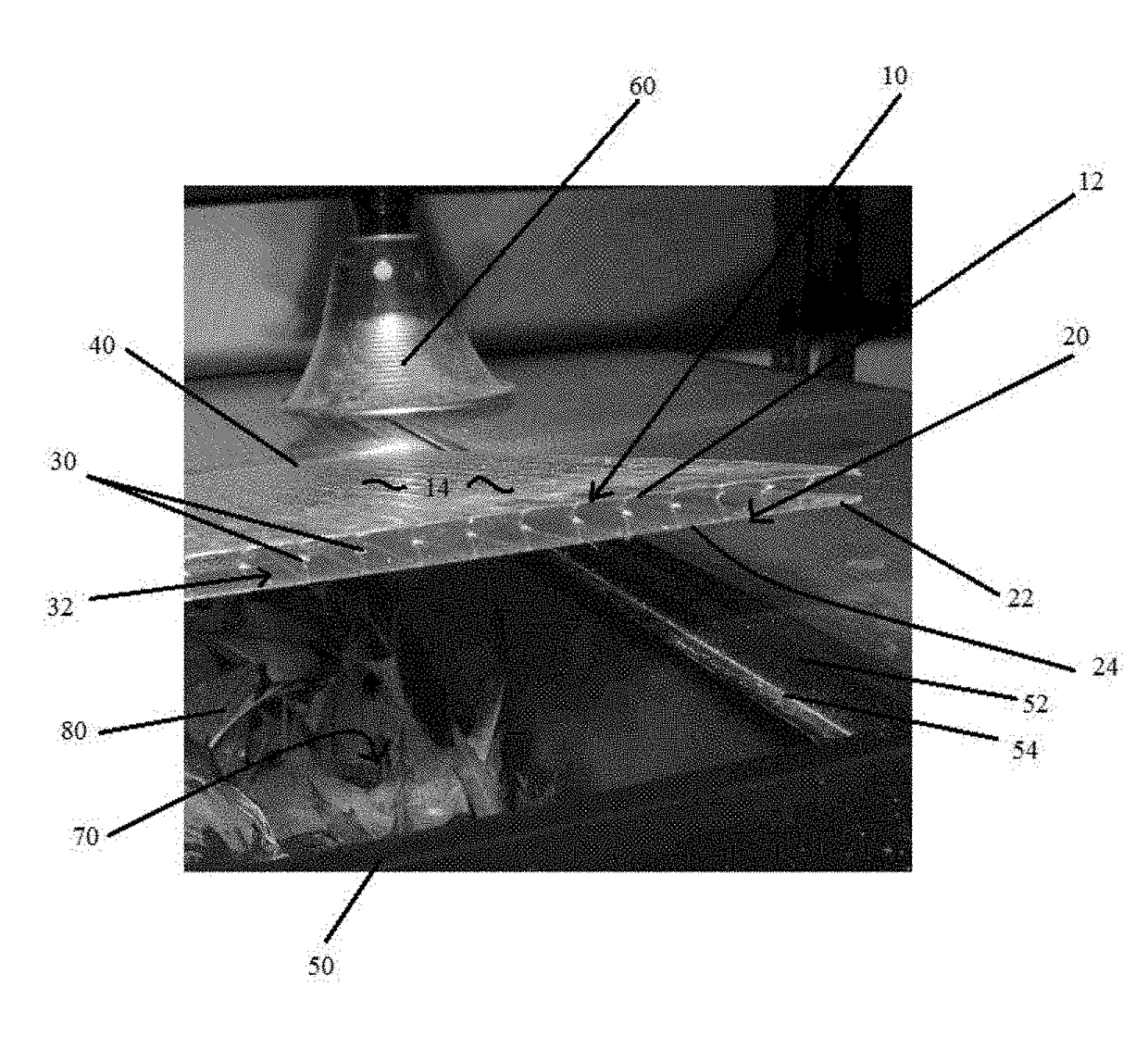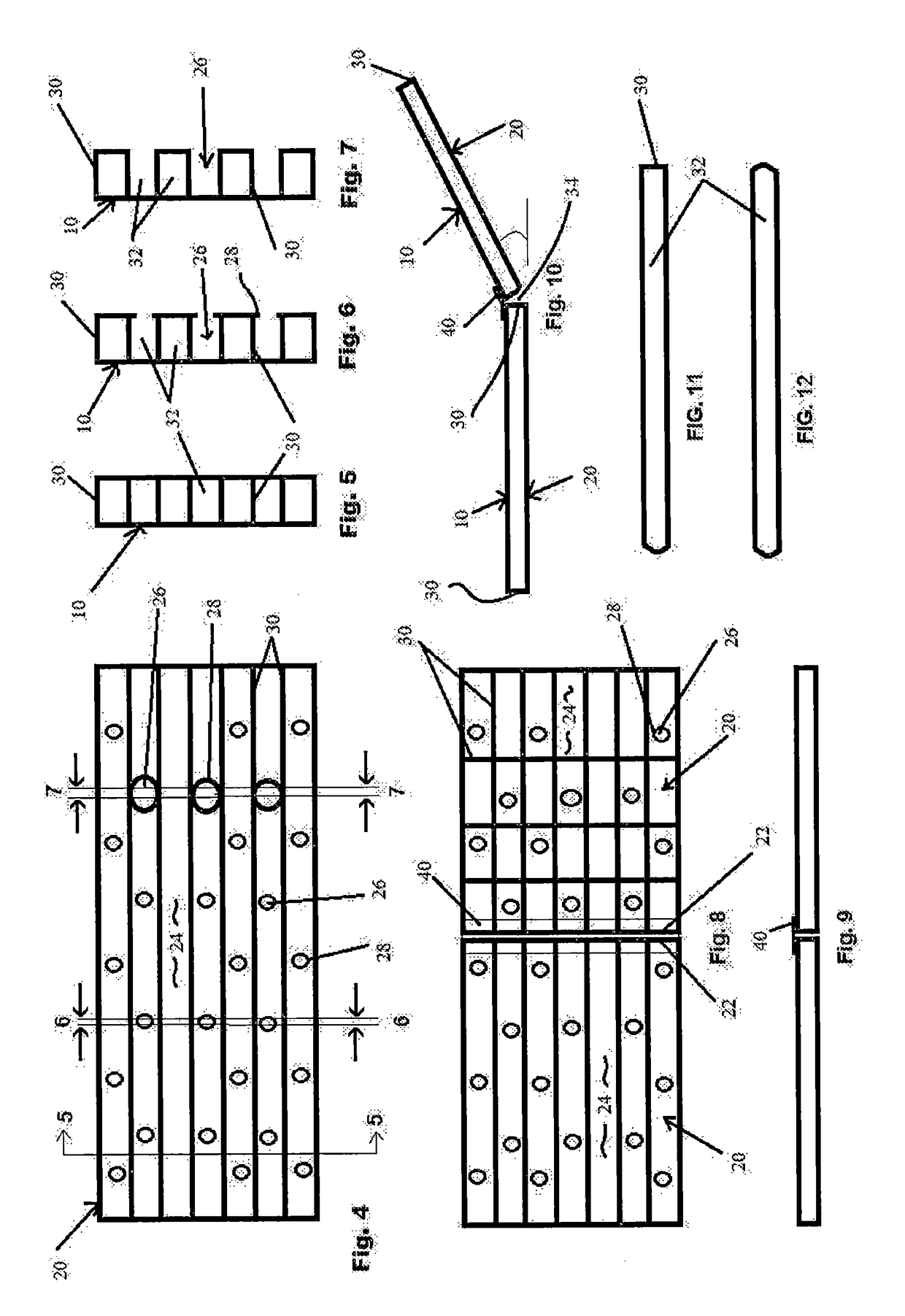Enclosure lid useful with an aquarium
a technology for aquariums and lids, applied in mechanical devices, semiconductor devices of light sources, lighting and heating apparatus, etc., can solve the problems of insufficient seals, water evaporation, and inability to provide suitable lids for aquariums, so as to reduce the number of vents, reduce the number of gaseous communication, and minimize the heat passing through the lid
- Summary
- Abstract
- Description
- Claims
- Application Information
AI Technical Summary
Benefits of technology
Problems solved by technology
Method used
Image
Examples
Embodiment Construction
)
[0066]With reference to FIGS. 1-3, a primary layer is designated generally by the reference numeral 10. The primary layer has an edge 12 and primary surface 14. The preferred embodiment of the present invention contemplates the use of two (2) primary layers in communication with each other. A second primary layer designated by the reference numeral 20 (FIG. 2) has an edge 22, primary surface 24, a plurality of vents (shown as apertures) 26 with aperture boundary 28. The primary layers 10 and 20, as well as the surfaces 14 and 24, can be formed in a single piece of material such as a rectangular section of polycarbonate bent or formed to have a pair of substantially parallel surfaces held in the proper alignment by a support (see FIGS. 11 and 12 discussed in more detail below) like that discussed with respect to FIG. 3.
[0067]With reference to FIG. 3, a preferred arrangement of a primary layer 10 and primary layer 20 is shown. As viewed from an edge 12 and 22, a plurality of supports...
PUM
 Login to View More
Login to View More Abstract
Description
Claims
Application Information
 Login to View More
Login to View More - R&D
- Intellectual Property
- Life Sciences
- Materials
- Tech Scout
- Unparalleled Data Quality
- Higher Quality Content
- 60% Fewer Hallucinations
Browse by: Latest US Patents, China's latest patents, Technical Efficacy Thesaurus, Application Domain, Technology Topic, Popular Technical Reports.
© 2025 PatSnap. All rights reserved.Legal|Privacy policy|Modern Slavery Act Transparency Statement|Sitemap|About US| Contact US: help@patsnap.com



